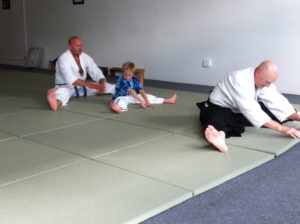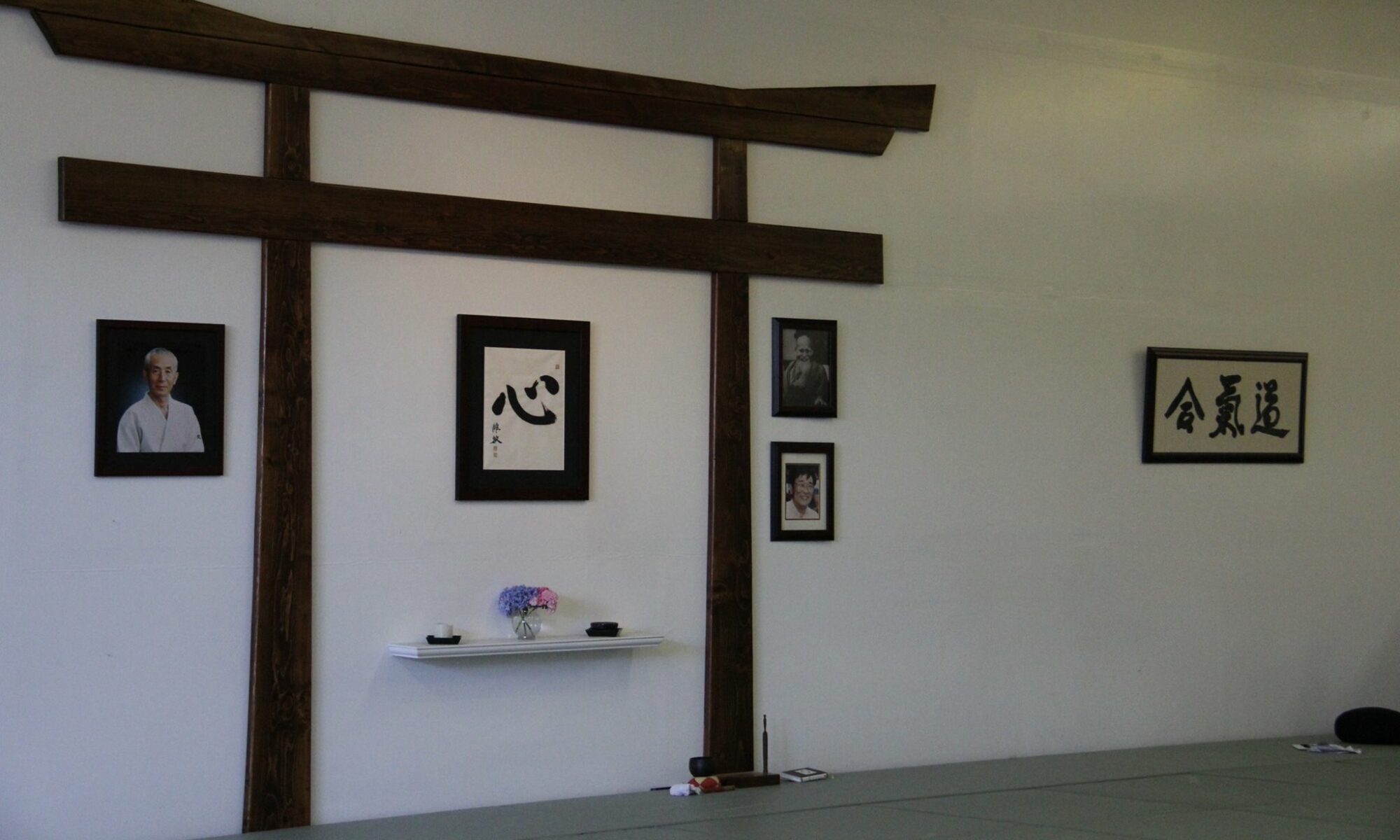At the beginning of every class, we go through a series of movements. It’s common for many of us to start taking these movements for granted or to start thinking of these movements as exercises to prepare our bodies for practice. In fact, these movements are intended to help us find some insights into the techniques of Aikido. They are the “forms” or kata of Aikido.
In many Japanese martial arts, kata are a series of movements that students practice many times over. Kata provide an opportunity to explore mind and body integration and one might go so far as to say that they are ultimately a way to practice integrity. Aikido kata are rather simple in their form, funikogi kata, ushirodori kata, etc. However, these kata all contain the core movements of Aikido arts. Additionally, they are often done as a group, giving Aikidoka the opportunity to further practice the movements of our art, in harmony with one another. This exploration of mind and body integration, combined with the intentional focus on maintaining 360 degree vision and being in harmony with our training partners, is a powerful training technique. Finally, kata are most instructive when we can effectively visualize a training partner challenging our movements and helping us commit to our movements.

As we practice our kata at the beginning of each class, we should work to be present and focused on what we’re doing. As a group, this activity will help us all develop our Aikido and enhance the kiai of our dojo.



